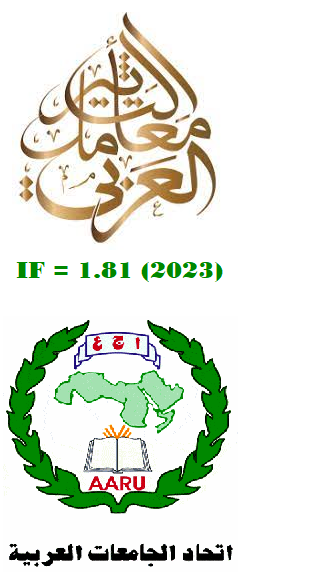Organisational Justice and Organisational Commitment among Secondary School Teachers
Abstract
The purpose of this study is to find the relationship between organizational justice (OJ) and organizational commitment (OC) among secondary school teachers. The sample consisted of 98 teachers working in 8 public secondary schools. OJ consists of three dimensions, namely, distributive justice (DJ), procedural justice (PJ), and interactional justice (IJ) which were used to measure the level of perception of justice among teachers, whereas to determine the level of commitment among teachers, the study used OC questionnaire. Pearson correlation and regression analysis methods were used to find the relationship and the impact of OJ on OC. The main findings of the study indicated that there is a positive and significant relationship between OJ dimensions and OC; DJ found highly correlated with OC. However, PJ and IJ positively and significantly predicted OC among secondary school teachers. The study could provide some significant literature contributions on the OJ and OC of secondary school teachers in developing countries.
Downloads
References
Ahmad, M. A. A., & Jameel, A. S. (2018). Factors affecting on job satisfaction among academic staff. Polytechnic Journal, 8(2), 119-128.
Al-Kilani, M. H. (2017). The influence of organizational justice on intention to leave: Examining the mediating role of organizational commitment and job satisfaction. Journal of Management and Strategy, 8(1), 18-27.
Aryee, S., Chen, Z. X., & Budhwar, P. S. (2004). Exchange fairness and employee performance: An examination of the relationship between organizational politics and procedural justice. Organizational Behavior and Human Decision Processes, 94(1), 1-14.
Bies, R. J., & Moag, J. S. (1986). Interactional justice: Communication criteria of fairness. In: Research in Negotiations in Organizations. (pp. 43-55). Greenwich: JAI Press.
Blau, P. (1964). Exchange and Power in Social Life. New York: Wiley.
Buluc, B., & Gunes, M. (2014). Relationship between organizational justice and organizational commitment in primary schools. Anthropologist, 18(1), 145-152.
Cohen, A. (2007). Commitment before and after: An evaluation and reconceptualization of organizational commitment. Human Resource Management Review, 17(3), 336-354.
Cohen-Charash, Y., & Spector, P. E. (2001). The role of justice in organizations: A meta-analysis. Organizational Behavior and Human Decision Processes, 86(2), 278-321.
Colquitt, J. A., Scott, B. A., Rodell, J. B., Long, D. M., Zapata, C. P., Conlon, D. E., & Wesson, M. J. (2013). Justice at the millennium, a decade later: A meta-analytic test of social exchange and affect-based perspectives. Journal of Applied Psychology, 98(2), 199-236.
Cropanzano, R., Prehar, C. A., & Chen, P. Y. (2002). Using social exchange theory to distinguish procedural from interactional justice. Group and Organization Management, 27(3), 324-351.
Crow, M. M., Lee, C. B., & Joo, J. J. (2012). Organizational justice and organizational commitment among South Korean police officers: An investigation of job satisfaction as a mediator. Policing, 35(2), 402-423.
Elamin, A. M. (2012). Perceived organizational justice and work-related attitudes: A study of Saudi employees. World Journal of Entrepreneurship, Management and Sustainable Development, 8(1), 71-88.
Greenberg, J. (1982). Approaching equity and avoiding inequity in groups and organizations. In: Equity and Justice in Social Behavior. Cambridge: Academic Press.
Greenberg, J. (1990). Organizational justice: Yesterday, today, and tomorrow. Journal of Management, 16(2), 399-432.
Griffin, M. L., & Hepburn, J. R. (2005). Side-bets and reciprocity as determinants of organizational commitment among correctional officers. Journal of Criminal Justice, 33(6), 611-625.
Hair, J. F., Black, W. C., Babin, B. J., & Anderson, R. E. (2010). Multivariate Data Analysis. 7th ed. Prentice Hall: Upper Saddle River.
Jameel, A. (2018b). Challenges facing students toward ICT library adoption. In: International Conference on Accounting, Business, Economics and Politics.
Jameel, A. S. (2018a). Issues facing citizens in Iraq towards adoption of e-government. Al-Kitab Journal for Human Sciences, 1(1), 9.
Jameel, A., & Ahmad, M. A. A. (2018). Determine some factors that affect to adoption of e-commerce among small and medium enterprises in Erbil. Polytechnic Journal, 8(1), 10.
Jameel, A., & Mohammed, A. M. (2016). Factors affecting customer loyalty towards yes company in Malaysia. International Journal of Advanced Research in Engineering and Management, 2(1), 7.
Jameel, A., Abdul-Karem, M., & Mahmood, N. (2017). A review of the impact of ICT on business firms. International Journal of Latest Engineering and Management Research, 2(01), 15-19.
Kumasey, A. S., Bawole, J. N., & Hossain, F. (2017). Organizational commitment of public service employees in Ghana: Do codes of ethics matter? International Review of Administrative Sciences, 83(1 Suppl), 59-77.
Lambert, E. (2003). The impact of organizational justice on correctional staff. Journal of Criminal Justice, 31(2), 155-168.
Lambert, E. G., Keena, L. D., Leone, M., May, D., & Haynes, S. H. (2019). The effects of distributive and procedural justice on job satisfaction and organizational commitment of correctional staff. Social Science Journal, DOI: 10.1016/j.soscij.2019.02.002.
Lavelle, J. J., Brockner, J., Konovsky, M. A., Price, K. H., Henley, A. B., Taneja, A., & Vinekar, V. (2009). Commitment, procedural fairness, and organizational citizenship behavior: A multifoci analysisy. Journal of Organizational Behavior, 30(3), 337-357.
Loi, R., Hang-Yue, N., & Foley, S. (2006). Linking employees’ justice perceptions to organizational commitment and intention to leave: The mediating role of perceived organizational support. Journal of Occupational and Organizational Psychology, 79(1), 101-120.
Mahmood, Y. N., Raewf, M. B., & AL-Hamadany, Z. S. (2019). A study on the perceptual relationship between overtime and output at private universities.
Massoudi, A. H., & Hamdi, S. S. A. (2017). The consequence of work environment on employees productivity. IOSR Journal of Business and Management, 19(1), 35-42.
Meyer, J. P., & Allen, N. J. (1991). A three-component conceptualization of organizational commitment. Human Resource Management Review, 1(1), 61-89.
Meyer, J. P., & Allen, N. J. (1997). Commitment in the Workplace: Theory, Research, and Application. Thousand Oaks: Sage.
Meyer, J. P., Stanley, D. J., Herscovitch, L., & Topolnytsky, L. (2002). Effective, continuance, and normative commitment to the organization : A meta-analysis of antecedents, correlates, and consequences. Journal of Vocational Behavior, 61(1), 20-52.
Mohd Kassim, K. M. A., Safizal, A. M., & Fitri, M. M. (2018). The Mediating Role of Conflict Management Styles between Organizational Justice and Effective Commitment among Academic Staffs in Malaysian Public Universities. MATEC Web of Conferences. Vol. 150.
Mowday, R. T., Porter, L. W., & Steers, R. M. (1982). Employee-Organization Linkages: The Psychology of Commitment, Absenteeism and Turnover. New York: Academic Press.
Nunally, J. C., & Bernstein, I. H. (1978). Psychometric Theory. New York: McGraw-Hill Book Company.
Porter, L. W., Steers, R. M., & Mowday, R. T. (1974). Organizational commitment, job satisfaction, and turnover among psychiatric technicians. Journal of Applied Psychology, 59(5), 603-609.
Qureshi, H., Frank, J., Lambert, E. G., Klahm, C., & Smith, B. (2017). Organisational justice’s relationship with job satisfaction and organisational commitment among Indian police. The Police Journal: Theory, Practice and
Principles, 90(1), 3-23.
Raewf, M. B., & Thabit, T. H. (2018). Influencing Factors on Customer Satisfaction: Study on a Sample of Arab Restaurants in Malaysia. Germany: LAP-Lambert Academic Publisher.
Raewf, M., & Thabit, T. (2015). The student’s satisfaction influential factors at Cihan University. International Journal of Advanced Research in Engineering and Management, 1(2), 63-72.
Rahman, A., Khan, M. F., Shahzad, N., Mustafa, K., & Qurashi, F. (2016). Effects of organizational justice on organizational commitment. International Journal of Economics and Financial Issues, 6(3), 188-196.
Steijn, B., & Leisink, P. (2006). Organizational commitment among Dutch public sector employees. International Review of Administrative Sciences, 72(2), 187-201.
Suliman, A., & Kathairi, M. A. (2013). Organizational justice, commitment and performance in developing countries: The case of the UAE. Employee Relations, 35(1), 98-115.
Thabit, T. H., & Raewf, M. B. (2016). The Impact of Voluntary Disclosure on SMEs in Developing Countries. (p. 46). Kota Bharu: 6th International Conference on Global Social Entrepreneurship.
Thabit, T., & Raewf, M. (2018). The evaluation of marketing mix elements: A case study. International Journal of Social Sciences and Educational Studies, 4(4), 10.
UNICEF. (2018). Every Child in School, and Learning. New York: UNICEF.
UNICEF. (2019). Humanitarian Situation Report Iraq. (pp. 1-2). New York: UNICEF.
Wallace, J. E. (1995). Organizational and professional commitment in professional and nonprofessional organizations. Administrative Science Quarterly, 40(2), 228.
Copyright (c) 2020 Alaa S. Jameel

This work is licensed under a Creative Commons Attribution-NonCommercial-NoDerivatives 4.0 International License.
Authors who publish with this journal agree to the following terms:
1. Authors retain copyright and grant the journal right of first publication with the work simultaneously licensed under a Creative Commons Attribution License [CC BY-NC-ND 4.0] that allows others to share the work with an acknowledgment of the work's authorship and initial publication in this journal.
2. Authors are able to enter into separate, additional contractual arrangements for the non-exclusive distribution of the journal's published version of the work (e.g., post it to an institutional repository or publish it in a book), with an acknowledgment of its initial publication in this journal.
3. Authors are permitted and encouraged to post their work online (e.g., in institutional repositories or on their website) prior to and during the submission process, as it can lead to productive exchanges, as well as earlier and greater citation of published work (See The Effect of Open Access).









